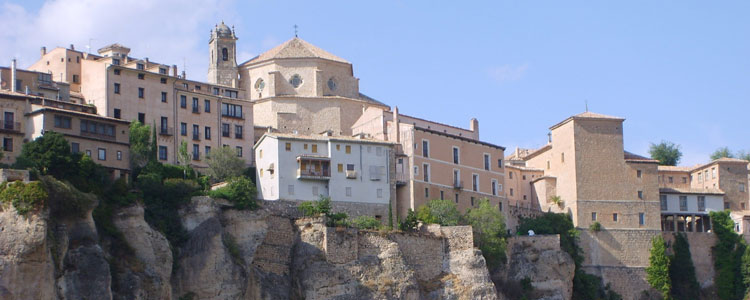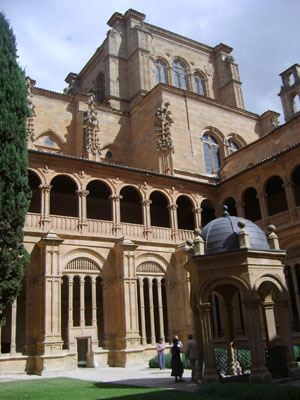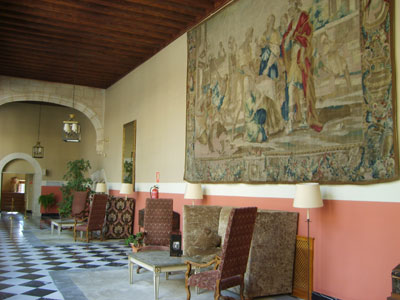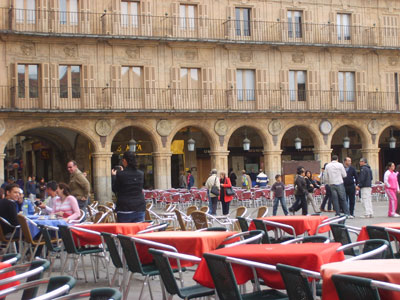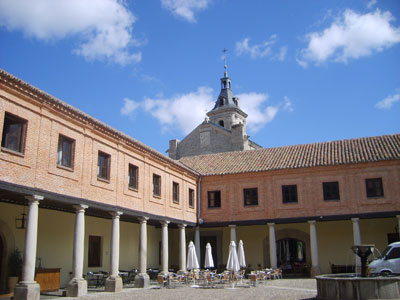Enjoying the ambiance of Spain’s paradores
by Henk Bouwman, Apeldoorn, The Netherlands
Years ago I took a trip through the mountainous area of Sierra de Gredos in central Spain and was enthralled by the crystalline waters, wild rocks and green pine groves of the region. During that trip I ended up in a village called Navarredonda, and, while I was looking for a place to spend the night, I was advised to choose the local parador. It was my first encounter with the Paradores de Turismo de España (based in Madrid; phone 00 34 902 54 79 79).
A special introduction
The one in Navarredonda, Parador de Gredos, turned out to be an impressive historical building situated in the middle of nature, high above the Tórmes Valley, with stunning views of the Gredos massif and the Piedrahíta and Béjar mountain ranges. The old building had been converted to a modern hotel with all the necessary amenities while retaining its special, ages-old atmosphere.
My bedroom was very comfortable, with a terrace and traditional-style furniture, and the food in the impressive dining room was, in one word, glorious.
I learned that the Parador de Gredos, inaugurated by King Alfonso XIII in 1928, happened to be the first of what is now a collection of 93 paradores spread out all over Spain (including the Canary Islands, Ceuta and, in the north of Morocco, Melilla). All paradores — some really old, others more modern — are state owned, and they are always situated in the most beautiful spots in the area, be it in the middle of the mountains, overlooking the sea or perched high above an impressive city.
The Paradores de Turismo, the publically funded company which manages the properties, has a threefold goal: to renovate and preserve historical monuments for the future, to provide classy accommodation in a special environment and to allow guests to enjoy an outstanding dining experience with dishes that are typical for the area.
Cuenca
With the nice Gredos parador still in mind, I decided to take a short trip in early 2010, staying at five paradores situated around the capital city of Madrid. Starting at Madrid’s Barajas Airport, I hired a car and headed for my first destination: Cuenca, a short drive to the east.
Cuenca, in the region of Castilla-La Mancha, is known as one of the most beautifully situated cities of Spain, especially its Old City, a UNESCO World Heritage Site since 1996. Situated high on a hilltop and wedged in between two rivers, Júcar and Huécar, it is a real gem, its walls and many of its buildings dating from medieval times.
In the Plaza Mayor I admired Cuenca’s late-12th-century cathedral, the first Gothic cathedral in Spain. Its facade was rebuilt in the early 20th century.
The Parador de Cuenca offered a magnificent view of the famous Casas Colgadas (Hanging Houses), which seem to balance precariously on the side of a protruding rock high above a deep gorge. A pedestrian bridge over the gorge gives access to the Old City.
The parador, itself, is the former Monastery of San Pablo, dating from the 16th century. In its restaurant, formerly the old refectory, it has a magnificent ceiling and tiled wall. My room was spacious, tastefully furnished and fitted with all the amenities of a modern luxury hotel. A double room runs around $200, excluding meals.
Cuenca is a most interesting place, and so is the nearby natural park of Serranía de Cuenca. This vast and amazing nature area has quite a number of highlights, including Ventano del Diablo (Devil’s Window), with its glorious views, and the strangely formed limestone rocks of the Ciudad Encantada (Enchanted City).
Alcalá de Henares
The Parador de Alcalá de Henares ($295, double), just northeast of Madrid, is a mixture of old and new. The heart of the complex is the 17th-century Dominican convent of Santo Tomás. This historical building has been integrated in a very creative way into the parador’s modern annex, its cunning design matching very well with the historical buildings in the area.
The center of Alcalá is like a living museum — full of narrow streets, houses like palaces and quite a number of old churches and convents — but, as a university city, it is at the same time active and full of life. This was evident when, late in the afternoon, I walked around the central Plaza de Cervantes, where a statue of the famous poet, born in Alcalá, oversees the crowd from his high socle. The locals are mostly young, there is a lot of atmosphere, and the city’s many terraces are cozy and inviting.
Segovia sights
From all of its rooms and public spaces, the Parador of Segovia ($180-$195, double) offered a magnificent view of the city beyond. And what a special view it was!
Looking at the houses that seemed to climb the side of the hill, topped by this walled city in all its glory, my attention was automatically drawn to two amazing buildings that rose high above it all: Segovia’s gigantic Gothic cathedral and, to the northwest, its fortress. In addition, there is an impressive Roman aqueduct, dating from the first century.
All this together created an unforgettable panorama of which I could hardly keep my eyes off, especially in the evening when all the monuments were illuminated.
The parador was rather new, but history was never far away; I only had to walk into the Old City, with its winding little streets, intimate squares and the facades of churches, convents and prominent houses.
On to Ávila
In the city of Ávila, you can’t miss Santa Teresa — the museum that is dedicated to her, the convent where she lived, the many souvenirs in the shops, streets and squares, and even the parking
lot that is named after her. But Ávila is more than the birthplace of this holy mystic.
From afar, I could already see the world-famous walls soaring into the blue sky. When entering the city, itself, I found myself in a true open-air museum. The gigantic cathedral of San Salvador looked like a fortress more than a church, and the many palaces were impressive.
I walked around the walled city, admiring its 2.5-kilometer-long walls with their many towers and gateways. During medieval times, Ávila must have been an invincible fortress.
The Parador de Ávila ($160, double), originally a palace dating from the 16th century, is situated directly behind the wall at the Carmen Gateway. Here visitors can climb to the top of the walls for an interesting walk, with ever-changing views of the city and the landscape beyond.
Salamanca stay
And then there is Salamanca — again with a parador that offered great views of the city and its principal monuments, including two cathedrals next to each other.
The tastefully designed and furnished Parador de Salamanca ($180, double) isn’t really old, but it was very elegant, comfortable and spacious, and it was an excellent starting point for a walk to and through the city.
Taking the old Roman bridge over the Tórmes River, I made my way along the inclining street to the city center, where I was in for a big surprise. There was plenty to see and enjoy.
In addition to the cathedrals, there is the Dominican Convent of Saint Stephen, with its marvelous courtyard; the university, Spain’s oldest; Casa de las Conchas, or House of Shells, and — without any doubt the number-one highlight — the Plaza Mayor, a pedestrian zone. One of the largest and possibly most beautiful squares in all of Spain, it is home to the Baroque 18th-century city hall and, on all sides, many lively cafés and terraces.
This is the spot where Salamancans gather in the afternoon, a place to see and be seen, to chat, listen to music and admire young couples making their way to the town hall in preparation for marriage. Once you’ve found a place to sit, you’ll never want to leave.
The food
At each of the paradores I visited, I was enthralled by the location, the special atmosphere and the unique combination of modern hotel accommodation within ages-old historical buildings (in most cases). But touring the paradores is also a trip through culinary Spain, allowing a taste of regional dishes, specialties, tapas and wines.
Most restaurants made full use of fresh products from the region, and I was happily surprised by the various dishes I tasted. In Gredos I had a local bean dish called judías del Barco; in Salamanca I had hornazo, a meat pie stuffed with pork, chorizo and hard-boiled eggs — a favorite — and tostón, roasted suckling pig; in Cuenca, I enjoyed pisto con lomo de orza, veal cutlet with fried vegetables, and in Alcalá I ended my meal with costrada, a tasty dessert made with puff pastry and almonds.
Visiting Spain’s paradores allows you a look at the highlights of the country’s history while you’re being pampered in luxury hotels with outstanding service and atmosphere.
For more information or to book online, visit the Paradores de Turismo website.

